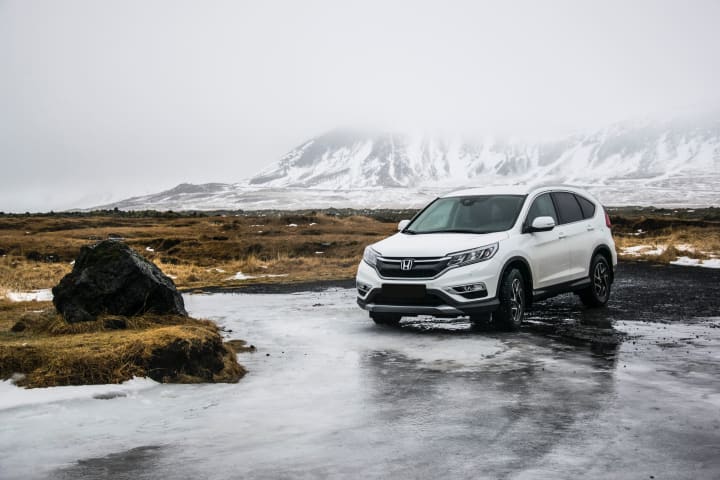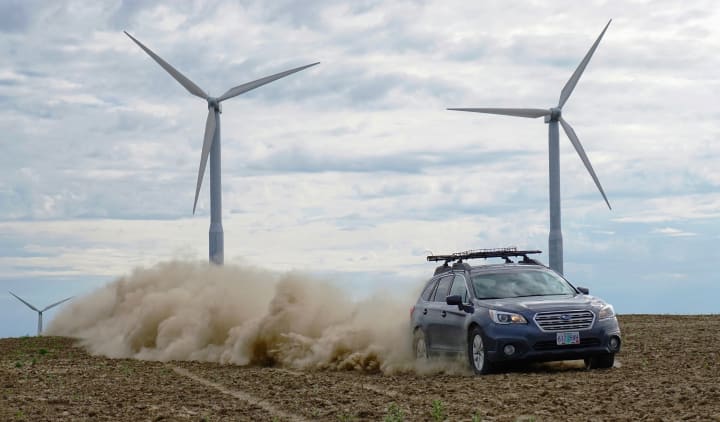Why Do Americans Hate Station Wagons?
Once the vehicle of choice for American families, station wagons have now all but disappeared from our roads. This begs the question, "Why do Americans hate station wagons?"

At one point in America's history, the station wagon was king. In the 1970s and 80s, there was simply no substitute for station wagons if you had a family. It usurped this position from the mid-size sedan, which had been the most popular option (because it was pretty much the only option) for parents with children for the bulk of the 20th century.
The station wagon's popularity, however, began to sharply decline in the last few years of the 1900s. Families splintered into factions preferring other, more specialized vehicles like smaller hatchbacks or the soccer mom classic: the minivan. As a result, sales of the station wagon began to take a sharp nosedive at the turn of the 21st century, and it has become increasingly difficult to find newly-produced station wagons on the market. In fact, today, you won't even find a station wagon in the lineup of offerings from major car manufacturers like the Ford Motor Company or General Motors.
Even the Subaru Outback, at one point the only beacon of hope for station wagons in the world, has abandoned the classic design. The Subaru Outback is still in production, mind you, but since its fifth generation entered the market in 2015, the Outback is no longer technically a station wagon, but rather a crossover SUV.
In this article, I would like to explore a few questions: Why do Americans hate station wagons? Is this disdain deserved? Can station wagons be resurrected? Do they deserve to be saved?
How did it come to this?

Photo by Rudolf Stricker on Wikimedia.org
Though it would cling to life for a short while longer, the death knell for the station wagon came in 1984 with the introduction of the first-generation Chrysler Minivan. The ugly monstrosity overcame its wood-paneled appearance to become the leading choice of passenger vehicles in the United States. By the 1990s, every major automotive manufacturer was cranking out new editions of minivans in all shapes and sizes, characterized by their tall bodies, large interior space, up to three rows of reconfigurable seats, and sliding side doors that provided easy access to passengers and cargo.
If you hate minivans as much as I do, you probably still can't comprehend how they could kill off the station wagon in the United States. You're probably still wondering, "Why do Americans hate station wagons?" The fact of the matter is that, though minivans were quick to steal the crown from station wagons as America's favorite family car, the two designs lived in relative harmony for a number of years. Small families with only one or two children, and other people with any modicum of taste, stuck with the simple, but functional, design of the station wagon through the minivan renaissance of the 1990s and early 2000s. So minivans, evil though they may be, were not powerful enough to quash the humble station wagon. In fact, the demise of both titans would be at the hands of an unexpected challenger.
Who is the new kid on the block?

Photo by Tabea Damm on Unsplash
While minivans remained the most prominent vehicle of choice for people with families, station wagons maintained their own corner of the market. Today, however, there are few of either vehicle on the road, let alone in production. The once dominant minivan has shrunk in popularity just as quickly as it rose, and now only a few manufacturers continue to produce them. Only three major models are still in production: the Honda Odyssey, the Toyota Sienna, and the original Chrysler line of minivans.
So really, the question we need to ask shouldn't just be, "Why do Americans hate station wagons?" But also, "Why do Americans hate minivans?" And, "What vehicle could possibly be more enticing than a Chrysler Town & Country minivan with aftermarket wood panelling?" The answer to all these questions can be summed up in just three words: Sport. Utility. Vehicle.
The first SUV as we know it today was probably the original Jeep Cherokee, which was introduced in 1983, but the SUV's origins date back at least as far as World War II. The SUV remained a vehicle for actual utility purposes throughout the 20th century, as Jeeps and other similar vehicles were primarily used by the military until the 1950s and 60s, when they began to creep into the civilian market. Even then, SUVs weren't considered to be good family vehicles, and instead served utilitarian purposes to people who could utilize the useful features of an SUV, such as its all-wheel-drive and off-road capabilities.
Something happened in the early 2000s, however. Americans finally became okay with the idea of keeping their kids in a gas-guzzling off-road vehicle, and more and more families began trading in their minivans for huge SUVs. A few factors aided in this shift, including the fact that SUVs were more profitable to auto manufacturers than smaller vehicles. It also didn't hurt that the SUV wasn't as butt-ugly as your average minivan. Finally, let's not forget their added safety benefits, making some of the safest family vehicles in 2018 SUVs. By the 2010s, SUVs had almost completely eradicated both minivans and station wagons from existence. In just the past couple of years, a smaller (and, mercifully, more fuel-efficient) version of the SUV, known as a crossover, has become America's family vehicle of choice.
What is the state of the market today?

Photo by Nico on Unsplash
Today, there's not a lot you can do if you are in the market for a new station wagon. A few companies still produce vehicles that can be considered close descendants of the station wagon, but they mostly seem to miss the point of why Americans first fell in love with station wagons all those years ago. The Mercedes-Benz E63 AMG is a great modern take on the station wagon, but let's face it: If you have $100,000 to spend on a car, you're going to get something nicer than a station wagon. Other modern station wagons, like the Volvo V60 and BMW 3 Series Wagon, are in pretty much the same boat as the Mercedes. Station wagon people and expensive European luxury car people are rarely the same people, especially when you consider these luxury brand vehicles that never even made it to the US.
For the longest time, station wagon enthusiasts could count on the Subaru Outback as the definitive modern station wagon. It carved its own quirky corner of the market by offering all-wheel-drive and other functional amenities that kept it relevant through the minivan boom of the 1990s and early 2000s. However, Subaru betrayed us all in 2009 by redesigning the Outback into a generic crossover. This 2009 redesign truly marked the end of the station wagon as we know it. For those of us who still carry a love for station wagons in our hearts, all we can do is pick up a used 1998 Outback, and fruitlessly ask ourselves, while driving off into the sunset, "Why do Americans hate station wagons?"
About the Creator
Glenn Bushinski
Poli Sci professor, closet protestor, and news addict. Definitely House Stark.






Comments
There are no comments for this story
Be the first to respond and start the conversation.